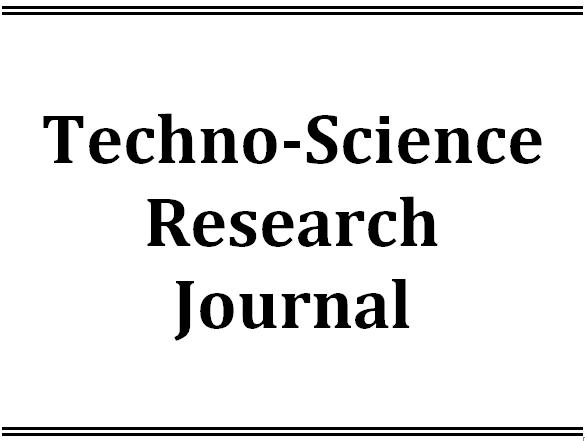Latest Issue
Empowering Education with Online Khmer Handwritten Text Recognition for Teaching and Learning Assistance
Published: August 30,2025Undergraduate Student Dropout Prediction with Class Balancing Techniques
Published: August 30,2025Status of Seawater Quality at Koh Rong Island, Sihanoukville, Cambodia
Published: August 30,2025Low-Complexity Detection of Primary Synchronization Signal for 5G New Radio Terrestrial Cellular System
Published: August 30,2025Word Spotting on Khmer Printed Documents
Published: August 30,2025Tuning Hyperparameters Learning Rate and Gamma in Gym Environment Inverted Pendulum
Published: August 30,2025Examining Passenger Loyalty in Phnom Penh Public Bus System: A Structural Equation Modelling Approach
Published: August 30,2025Prediction on Load model for future load profile of Electric Vehicle charging demand in Phnom Penh
Published: August 30,2025Economic Study on Integrating PV-DG with Grid-Tie: Case Study in Cambodia
Published: August 30,2025Formulizing the Design Criteria for Piped Water System in Cambodia: A Case Study in Anlong Romiet Water Supply
-
1. Faculty of Hydrology and Water Resources Engineering, Institute of Technology of Cambodia, Russian Federation Blvd., P.O. Box 86, Phnom Penh, Cambodia.
Received: January 26,2022 / Revised: / Accepted: April 11,2022 / Available online: June 30,2022
The Royal Government of Cambodia has set a target of providing clean water to the residents of the whole country in 2025, in which up to 90% of households are covered by piped water supply. To date, nearly 400 water supplier providers (formal and informal) are presented and reported that existing infrastructure reveals poorly designed systems and construction mistakes. The standard design for water supply and modern technology was proposed to improve the efficiency of the piped water system. Thus, this study aimed to standardize the design criteria for urban water supply in Cambodia relating to essential parameters. Firstly, to determine the flow pattern and peak flow coefficient of water consumption, and lastly, to evaluate the existing water supply system in the urban water supply system. The Anlong Romiet water supply represents a small-scale piped water system that was selected as the study area. This water supply was operated under the private sector, which has a capacity of 1900 m3/day and serves a total area of 15 km2 in two communes. The observed flowrate data from 2019 to 2021 and end-piped residual pressure were collected. A hydraulic model, the EPANET software, was used to stimulate the flow, produce residual pressure, and provide scenario projection to improve the piped network. The model calibration and validation of end-piped residual pressure were satisfied with an R2 of 0.84 and 0.78, respectively. This research found that the average peak flow coefficient was approximately 1.5 ± 0.1, typically used in the urban water supply. While peak hour demand was observed two times in the morning, from 7 to 8 am and in the evening from 5 to 6 pm. The current study's highest frequency value of average nodal pressure was 30 m. The analysis revealed that current water demand is steady in terms of end-pipe pressure; however, dramatically low water pressure (under 5 m) will occur in 2035.

